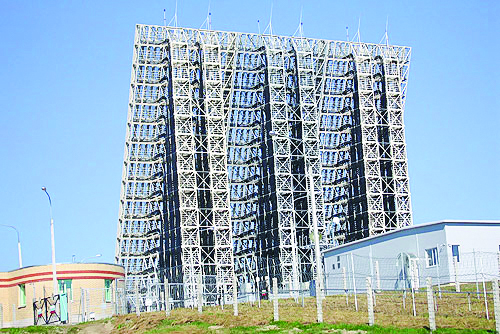Our Terms & Conditions | Our Privacy Policy
India may acquire advanced Russian radar system
Almaz-Antey’s Voronezh radar detects missiles, aircraft, and threats up to 6,000–8,000 km, supporting Russia’s missile defence network.
New Delhi: India and Russia are likely working towards finalising a deal involving India purchasing an early warning radar system with a range of over 6,000 kilometers.
The deal, which is expected to be worth more than $4 billion, is in an advanced stage of discussion. Last month, a ten-member team from Almaz-Antey, one of Russia’s largest manufacturers of air defence systems, including radar systems, missile defence systems, and related technologies, led by Deputy Chairman Vladimir Medovnikov, visited India. They travelled to Delhi and Bengaluru to, among other things, interact with the offset partners that will be involved in this deal.
According to sources, at least 60 percent of the system will be manufactured by Indian partners, in line with India’s Make in India initiative.
Among the products in Almaz-Antey’s catalog is the Voronezh radar, an early warning radar system designed to detect ballistic missiles, aircraft, and other aerial threats at long ranges. This system is part of Russia’s missile defence and space surveillance infrastructure. The detection range of the Voronezh radar is approximately 6,000 to 8,000 km (about 3,700 to 5,000 miles), depending on the version and the specific frequency band it operates in.
It is not clear yet whether the Russian team plans to sell this specific radar system or if the Indian side has requested an upgraded version of the same.
So far, only Russia, China, and the United States have radar systems in their arsenals with a range of operation exceeding 5,000 km. The installation of the system is likely to take place in Chitradurga, Karnataka.
Russia, which started using this system in 2012, has deployed at least ten Voronezh radar systems as part of its extensive early warning and missile defence infrastructure. These radars are purely defencive in nature, designed to defend against ballistic missile threats and to monitor potential threats from aircraft and other aerial objects.
On the Indian side, the project is being handled by LRDE (Electronics and Radar Development Establishment), a part of India’s DRDO (Defence Research and Development Organisation).
Sources revealed that on 5 November 2022, a team from DRDO, led by its Chairman Samir Kamat, visited Moscow, accompanied by other top officials, including BK Das, Director General of Electronics & Communication Systems (ECS), and the project director.
The ECS consists of a group of laboratories, including LRDE, that design and develop electronic, electro-optical, and laser-based systems and sensors.
The project, aside from significantly bolstering India’s defence capabilities, is expected to generate substantial employment across the country, with over 50 Indian companies involved. The Sunday Guardian has access to a list of these companies, many of them startups. The economic benefit of the said deal by way of employment generation in the country, sources said, was one of the main cornerstones of the discussions.
Images are for reference only.Images and contents gathered automatic from google or 3rd party sources.All rights on the images and contents are with their legal original owners.



Comments are closed.